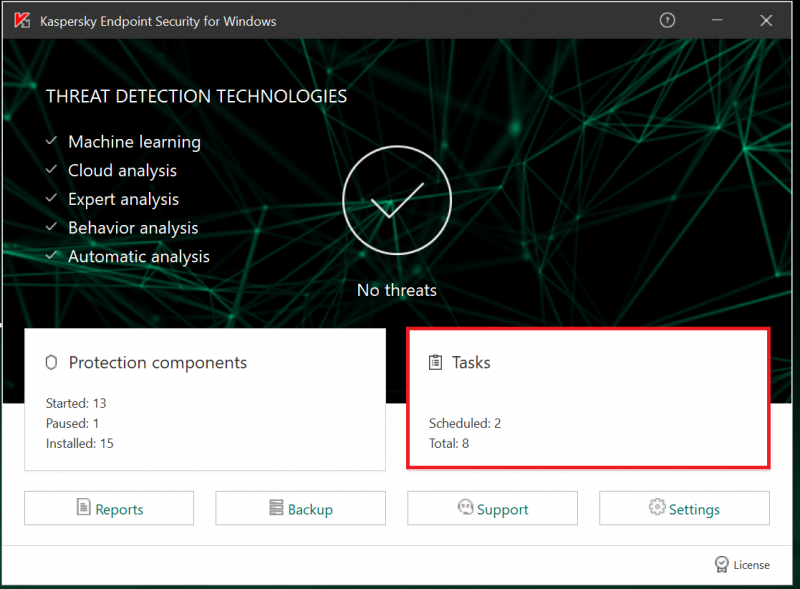

- #Setting up micosoft updates with kaspersky endpoint 10 update#
- #Setting up micosoft updates with kaspersky endpoint 10 Patch#
- #Setting up micosoft updates with kaspersky endpoint 10 download#
Select the localization languages for the updates that you want to download to the Administration Server.Enabling and disabling updates of the security application on devices running Windows. If the All categories check box is selected, updates will be downloaded for all existing updates categories, and for all categories that may appear in the future. Select the categories of updates that you want to download to the Administration Server. 
If the All applications check box is selected, updates will be downloaded for all existing applications, and for all applications that may be released in the future.
 Select the applications for which you want to download updates.
Select the applications for which you want to download updates. 
To avoid a decrease in disk space volume and to reduce traffic, disable the Download express installation files option.
#Setting up micosoft updates with kaspersky endpoint 10 update#
Downloading express update files leads to decreased free space on the drive. In particular, Kaspersky Security Center saves information about express update files to the database and downloads them when necessary. All files required for an update are also downloaded to the drive during interaction with the Windows Update Agent. When Kaspersky Security Center synchronizes updates with Microsoft Windows Update Servers, information about all files is saved in the Administration Server database.
Enable the Download express installation files option if you want the express update files to be downloaded when running the task. A task name cannot be more than 100 characters long and cannot include any special characters ("*?\:|). Specify the name for the task that you are creating. For the Kaspersky Security Center application, select the Perform Windows Update synchronization task type. Proceed through the Wizard by using the Next button. In the main application window, go to DEVICES → TASKS. To create the Perform Windows Update synchronization task: You can run the Administration Server maintenance task to delete these outdated records from the database and corresponding files. When the Perform Windows Update synchronization task completes and outdated updates are deleted, the database may still have the hash codes pertaining to the files of deleted updates, as well as corresponding files in the %AllUsersProfile%\Application Data\KasperskyLab\adminkit\1093\.working\wusfiles files (if they were downloaded earlier). Kaspersky Security Center also checks for outdated updates that were flagged for deletion more than 180 days ago, and then deletes those older updates. At the next start of the Perform Windows Update synchronization task, all updates flagged for deletion 30 days ago are deleted. At the next start of the Find vulnerabilities and required updates task, Kaspersky Security Center flags all outdated updates and sets the deletion time for them. Next, Kaspersky Security Center compiles a list of updates that have become outdated. When running the Perform Windows Update synchronization task, the application receives a list of current updates from a Microsoft update server. To reduce disk space usage and database size, deletion of outdated updates that are no longer present on Microsoft update servers has been implemented in Kaspersky Security Center 10 Service Pack 3. As a result, the database continuously grew in size. In Kaspersky Security Center 10 Service Pack 2 Maintenance Release 1 and earlier versions, all updates were retained: no outdated updates were deleted. Microsoft regularly deletes outdated updates from the company's servers so the number of current updates is always between 200 000 and 300 000. Kaspersky Security Center downloads the updates when you run an update installation task and only those updates that you select for installation. The Perform Windows Update synchronization task only downloads metadata from Microsoft servers. If the network does not use a WSUS server, each client device downloads Microsoft updates from external servers independently. In this case, the Administration Server downloads Windows updates to the database, and provides the updates to Windows Update on client devices, in the centralized mode through Network Agents. The Perform Windows Update synchronization task is required if you want to use the Administration Server as a WSUS server. #Setting up micosoft updates with kaspersky endpoint 10 Patch#
The features provided under the Vulnerability and Patch Management license are only available in MMC-based Administration Console, and Kaspersky Security Center 12.2 Web Console or later versions. The Perform Windows Update synchronization task is only available under the Vulnerability and Patch Management license. Creating the Perform Windows Update synchronization task








 0 kommentar(er)
0 kommentar(er)
